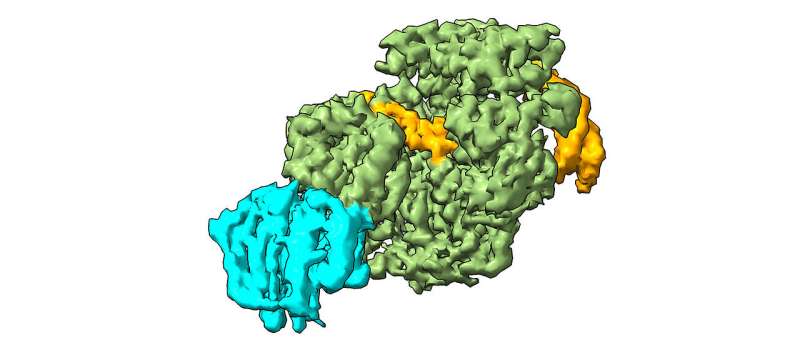This article has been reviewed according to Science X's editorial process and policies. Editors have highlighted the following attributes while ensuring the content's credibility:
fact-checked
peer-reviewed publication
trusted source
proofread
DNA repair mechanism further elucidated in cryo-electron microscopy experiment

Researchers have discovered how the protein XPD detects severe DNA damage and controls its repair.
The XPD protein is a central component of our body's own "DNA repair team," known as nucleotide excision repair (NER). Like a sniffer dog, NER detects marked areas of damage, tracks down the damaged DNA and recruits other repair proteins to cut out and replace the defective sections. In healthy people, for example, XPD prevents the development of skin cancer by detecting and repairing UV-damaged DNA.
A team of researchers at the University of Würzburg (JMU) has now discovered for the first time exactly how the XPD protein is able to detect and verify the presence of DNA damage. The team was led by the biochemist Caroline Kisker, Chair of Structural Biology at the Rudolf Virchow Center in Würzburg, in collaboration with the chemist Claudia Höbartner from the Department of Organic Chemistry. The study is published in Nature Structural & Molecular Biology.
Study of severe DNA damage
The Würzburg team focused on how the XPD protein works in interstrand crosslinking—one of the most severe forms of DNA damage known. It is caused, for example, by environmental toxins and industrial chemicals. "Interstrand crosslinking causes DNA to be incorrectly copied and read during cell division," explains Kisker. "This leads to genetic damage that can trigger cancer."
In their study, the scientists used cryo-electron microscopy to analyze how XPD unwinds the double helix of DNA to reveal the defective sites of interstrand cross-linking, and created a model of how the damage is detected and removed.
"The findings from our work provide the basis for new approaches to treating various types of cancer," says Jochen Kuper, a member of Kisker's team. "By specifically weakening repair mechanisms such as NER in cancer cells, we could significantly increase the effectiveness of drugs."
In further studies, the research team plans to investigate how XPD detects various other types of DNA damage.
More information: Jochen Kuper et al, XPD stalled on cross-linked DNA provides insight into damage verification, Nature Structural & Molecular Biology (2024). DOI: 10.1038/s41594-024-01323-5
Journal information: Nature Structural & Molecular Biology
Provided by Julius-Maximilians-Universität Würzburg




















